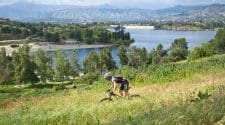Winter is upon us and it is the toughest time of the year to be a cyclist. The combination of reduced daylight, bad weather, and difficult conditions make it a time of the year in which you do not want to go outside to ride.
It is possible to get around these issues, however. Building a winter training plan will enable you to beat the blues this year. While beating the cycling winter blues, why not use the latest bet365 bonus code to wager on the sports you love to watch when you are not on your bike.
What are your goals and objectives?
Writing down your goals and objectives is an important first step to winter training. As the old adage goes, if you fail to plan, you plan to fail. Therefore, you need to start out by setting what you hope to get from winter training. Your goals may be related to fitness, performance, or a mixture of both.
By using the S.M.A.R.T approach, you can make your goals Specific, Measurable, Achievable, Relevant and Time-bound. This is will help you when setting up meaningful goals for the winter. You should set out long-term goals for the winter season, but add in short-term objectives that can measure your progress along the way.
Schedule your training sessions
It is easier to train during the winter months if you schedule out your sessions. A schedule makes it less likely that you will bail on your plans to ride. In addition to not bailing out on a training session, a schedule will help you achieve your long-term goals and short-term objectives.
You can schedule your workouts to achieve specific objectives. You are also able to schedule specific types of training, whether it be speed, distance, or an indoor session on Zwift. Be sure to schedule both indoor and outdoor sessions. Having the indoor sessions gives you the chance to ride inside if the weather is cold, rainy, or snowy. However, outdoor sessions allow you to break up the monotony of riding inside all week.
You may want to have a dedicated outdoor bike for winter. A winter bike will allow you to ride in poor conditions.
Get adequate rest
Training puts stress your body and forces it to adapt. During periods of rest, your body repairs, recovers, and improves. This leaves you stronger for the next training session. However, continued stress without time to recover gives your body no chance to adapt and improve.
Overtraining leads to a suppression of your immune system. A suppressed immune system makes you more susceptible to upper respiratory tract infections during winter. If you become ill and take off days or even weeks, then you will undo all of the training you previously did.
Training during the winter can be a chore. Inclement weather makes winter training feel like a hassle. By setting up a training schedule, setting up goals, and getting an adequate amount of rest in between sessions, you will set yourself up for a strong offseason of cycling.
No products found.















